Related Research Articles
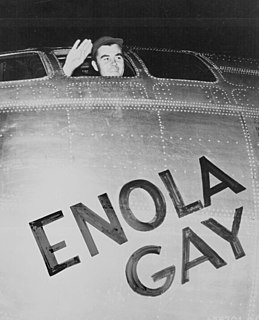
The Enola Gay is a Boeing B-29 Superfortress bomber, named after Enola Gay Tibbets, the mother of the pilot, Colonel Paul Tibbets. On 6 August 1945, piloted by Tibbets and Robert A. Lewis during the final stages of World War II, it became the first aircraft to drop an atomic bomb. The bomb, code-named "Little Boy", was targeted at the city of Hiroshima, Japan, and caused the near-complete destruction of the city. Enola Gay participated in the second atomic attack as the weather reconnaissance aircraft for the primary target of Kokura. Clouds and drifting smoke resulted in a secondary target, Nagasaki, being bombed instead.

The Smithsonian Institution, also known simply as The Smithsonian, is a trust instrumentality of the United States composed as a group of museums and research centers. It was founded on August 10, 1846, "for the increase and diffusion of knowledge". The institution is named after its founding donor, British scientist James Smithson. It was originally organized as the "United States National Museum", but that name ceased to exist as an administrative entity in 1967.

The Hughes H-4 Hercules is a prototype strategic airlift flying boat designed and built by the Hughes Aircraft Company. Intended as a transatlantic flight transport for use during World War II, it was not completed in time to be used in the war. The aircraft made only one brief flight on November 2, 1947, and the project never advanced beyond the single example produced.
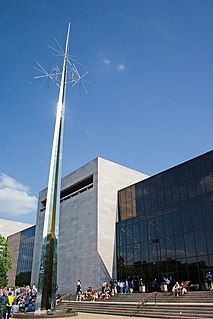
The National Air and Space Museum of the Smithsonian Institution, also called the Air and Space Museum, is a museum in Washington, D.C. It was established in 1946 as the National Air Museum and opened its main building on the National Mall near L'Enfant Plaza in 1976. In 2018, the museum saw approximately 6.2 million visitors, making it the fifth most visited museum in the world, and the second most visited museum in the United States. The museum contains the Apollo 11 Command Module Columbia, the Friendship 7 capsule which was flown by John Glenn, Charles Lindbergh's Spirit of St. Louis, the Bell X-1 which broke the sound barrier, the model of the starship Enterprise used in the science fiction television show Star Trek: The Original Series, and the Wright brothers'Wright Flyer airplane near the entrance.

The Steven F. Udvar-Hazy Center, also called the Udvar-Hazy Center, is the Smithsonian National Air and Space Museum (NASM)'s annex at Washington Dulles International Airport in the Chantilly area of Fairfax County, Virginia, United States. It holds numerous exhibits, including the Space Shuttle Discovery, the Enola Gay, and the Gemini 7 space capsule.
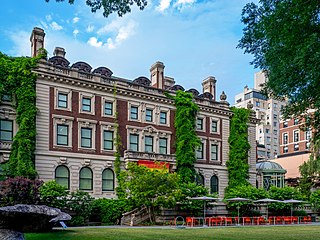
Cooper Hewitt, Smithsonian Design Museum is a design museum located in the Upper East Side's Museum Mile in Manhattan, New York City. It is one of 19 museums that fall under the wing of the Smithsonian Institution and is one of three Smithsonian facilities located in New York City, the other two being the George Gustav Heye Center in Bowling Green and the Archives of American Art New York Research Center in the Flatiron District. It is the only museum in the United States devoted to historical and contemporary design. Its collections and exhibitions explore approximately 240 years of design aesthetic and creativity.

The Wright Flyer was the first successful heavier-than-air powered aircraft. Designed and built by the Wright brothers, they flew it four times on December 17, 1903, near Kill Devil Hills, about four miles south of Kitty Hawk, North Carolina. Today, the airplane is exhibited in the National Air and Space Museum in Washington D.C. The U.S. Smithsonian Institution describes the aircraft as "the first powered, heavier-than-air machine to achieve controlled, sustained flight with a pilot aboard." The flight of the Wright Flyer marks the beginning of the "pioneer era" of aviation.
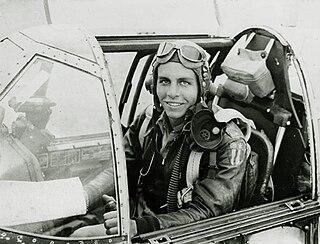
Donald Sewell Lopez Sr. was a United States Army Air Forces and United States Air Force fighter and test pilot and until his death the deputy director of the Smithsonian National Air and Space Museum.

Paul B. MacCready Jr. was an American aeronautical engineer. He was the founder of AeroVironment and the designer of the human-powered aircraft that won the first Kremer prize. He devoted his life to developing more efficient transportation vehicles that could "Do more with less".

Richard P. Hallion is Senior Adviser for Air and Space Issues, Directorate for Security, Counterintelligence and Special Programs Oversight, the Pentagon, Washington, D.C. He is responsible for analysis and insight regarding the conceptualization, evolution and utilization of sensitive national technological programs and related subject areas.
Milton Halberstadt (1919–2000) was a US photographer in fine art and commercial photography who left a body of work covering genres from abstract art to commercial photography.
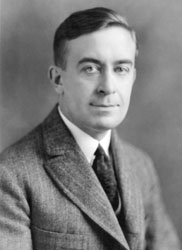
Alfred Victor Verville was an aviation pioneer and aircraft designer who contributed to civilian and military aviation. During his forty-seven years in the aviation industry, he was responsible for the design and development of nearly twenty commercial and military airplanes. Verville is known for designing flying boats, military racing airplanes, and a series of commercial cabin airplanes. His planes were awarded with the Pulitzer Speed Classic Trophy in 1920 and 1924.
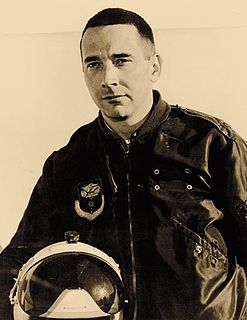
Walter J. Boyne was a United States Air Force officer, Command Pilot, combat veteran, aviation historian, and author of more than 50 books and over 1,000 magazine articles. He was a director of the National Air and Space Museum of the Smithsonian Institution and a Chairman of the National Aeronautic Association.

RAND Corporation is an American nonprofit global policy think tank created in 1948 by Douglas Aircraft Company to offer research and analysis to the United States Armed Forces. It is financed by the U.S. government and private endowment, corporations, universities and private individuals. The company has grown to assist other governments, international organizations, private companies and foundations with a host of defense and non-defense issues, including healthcare. RAND aims for interdisciplinary and quantitative problem solving by translating theoretical concepts from formal economics and the physical sciences into novel applications in other areas, using applied science and operations research.

The Wright Vertical 4 was an American aircraft engine built by the Wright brothers in the very early years of powered flight. It was a liquid-cooled piston engine with four inline cylinders, mounted vertically. It generated about 30–40 horsepower (22–30 kW) from a displacement of 240 cubic inches and weighed about 160–180 pounds (73–82 kg). Developed by Orville Wright in 1906, the Vertical 4 was produced by the Wright Company until 1912 and was the most numerous engine they manufactured. Around a hundred Vertical 4 engines were built, according to a Wright test foreman.
The Smithsonian Institution Archives (SIA) is the archives of the Smithsonian Institution. SIA is located in Washington, D.C., United States, and maintains the archives related to the history of the 19 museums and galleries, the National Zoological Park, 9 research facilities, and the people of the Smithsonian.
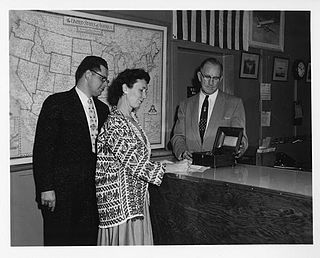
Helena May Weiss was an American museum administrator and registrar. She was one of the first women managers at the Smithsonian Institution and was involved in the acquisition of the Hope Diamond and the Wright Flyer.
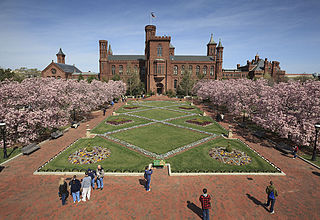
The Smithsonian Gardens, a division of the Smithsonian Institution, is responsible for the "landscapes, interiorscapes, and horticulture-related collections and exhibits", which serve as an outdoor extension of the Smithsonian's museums and learning spaces in Washington, D.C. Established in 1972 as a groundskeeping and horticulture program, Smithsonian Gardens currently manages 180 acres of gardens on the National Mall, 64,000 square feet of greenhouse production space, and the Archives of American Gardens, a research collection of over 60,000 photographs and archival records covering American landscape history from the 1870s to the present.

Frank H. Winter is an American historian and writer. He is the retired Curator of Rocketry of the National Air and Space Museum (NASM) of the Smithsonian Institution of Washington, D.C. Winter is also an internationally recognized historian of rocketry and spaceflight and the author of several landmark books besides numerous articles and papers on these topics.

Keith Ferris is an aviation artist whose work is displayed at the Smithsonian Institution's National Air and Space Museum and the National Museum of the US Air Force and has been cited as the “Dean of American Aviation Art”. His work in aircraft camouflage has transformed the approach to painting US military aircraft.